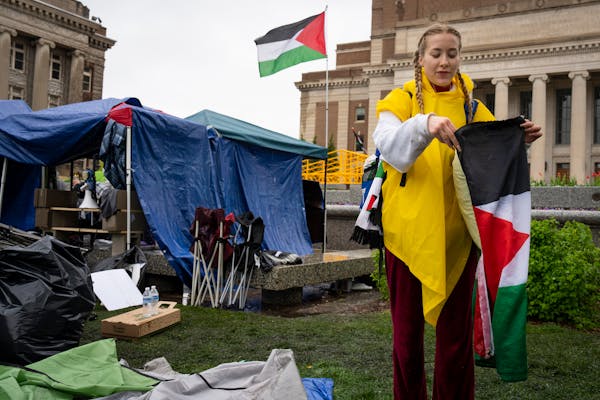The fourth page of the guidebook given to each University of Minnesota freshman looks like a worksheet. At orientation, before flipping through the sections about campus life, new students were asked to list their worries and stressors and jot down some self-care options such as going for a walk or writing in a mindfulness journal.
The page is a recent addition to the handbook on the Twin Cities campus and an example of the considerations and adjustments that leaders at colleges and universities across the state are making for the class of 2026 — a cohort who saw much of their high school experience marred by the pandemic.
"We are very aware that this class is different," said Lizette Rebolledo, director of orientation and transition experiences at the U. "The last two years were like nothing that they or any of us have experienced. It's important to acknowledge that it hasn't been easy for these students."
The pandemic shut down in-person classes and hindered face-to-face socializing when most incoming college freshmen were just high school sophomores. The waves of disruption and isolation during that time took a toll, research shows. Seventy percent of K-12 public schools in the U.S. reported an increase since the start of the pandemic in the percentage of students seeking mental health services at school, according to the National Center for Education Statistics.
Several colleges and universities within the Minnesota State Colleges and Universities system have also tweaked their new student orientation and welcome activities this year to better meet the more acute social and emotional needs of the incoming class.
Julia Roland, the director of first-year programs at Minnesota State University Moorhead, said discussions on managing stress and anxiety have been incorporated into several aspects of the enrollment process as well as the curriculum for a course that each freshman is required to take their first semester. As she plans activities to encourage students to socialize, she's also had to be mindful of planning options with smaller groups, which may feel less intimidating for students who haven't spent much time around crowds in recent years.
"We're hearing a lot of feedback from students about large group anxiety," Roland said. "We're trying to meet them where they are at while also knowing that they are all over the place."
That means pushing for changes within college systems that are often steeped in time-honored traditions, Roland said.
"Once I started thinking about these 18-year-olds as 15-year-olds, it really helped me understand them better," Roland said. "They don't want to hear that, but in many ways, that's where they're at socially and emotionally."
After the new U students received their handbooks during a recent orientation session, they joined their families in the campus union for a welcome message from Calvin Phillips, vice president for student affairs and dean of students. He greeted the group — a few dozen of the 6,700 new students this year — with a bit of reassurance that it's OK to feel uncertain and anxious.
"But you've already demonstrated great resilience as you navigated your high school learning during the pandemic," Phillips told them.
Welcome week activities at the U have always been aimed at bringing students out of their shells, but it's even more crucial this year, Phillips said. He's hearing from more parents who are worried about how their student will connect with others or how they will feel comfortable enough to get involved on campus.
"So we are really working to prepare family members to be that resource more than ever," Phillips said. "Because we know that if a student is struggling, they'll call [their family] before they call us."
Kevin Peterson, the father of a freshman at the U, said he was happy that parents were given the same handbook as the students so he'll know how to direct his son to resources.
"It's nice to know that he isn't left to go through these things alone," Peterson said. "That's reassuring to hear as parents sending their first kid off to college."
Transfer student Madeline "Lin" Boemer also noticed the deliberate efforts at the U to give new students time to meet one another and connect, particularly compared with the orientation process at her former school.
"That's really special because it has been a tough couple years for making friends," she said.
Lizzie Galvin, a freshman elementary education major, said she appreciated that university leaders recognized the needs and worries students have after spending their high school years in a pandemic.
Still, she noticed some of the talk about first-year anxieties and self-care plans seemed aimed at stressed-out parents.
"I'm just hoping to have a normal freshman year and college experience after these last few years," Galvin said.
That kind of hope gives Roland, the first-year programs director at Minnesota State University Moorhead, a boost of optimism. Over the past two years, she's seen more students losing motivation, failing classes and no longer interacting with groups and activities on campus. But that could be changing, she said.
"This group of new students is definitely engaged and willing to go to the activities we give them," Roland said. "They are so much more inquisitive and grateful, and I think that's because of all they did miss out on in high school."
In heated western Minn. GOP congressional primary, outsiders challenging incumbent

Minnesota Sports Hall of Fame: A class-by-class list of all members

This retired journalist changed professional wrestling from Mankato

